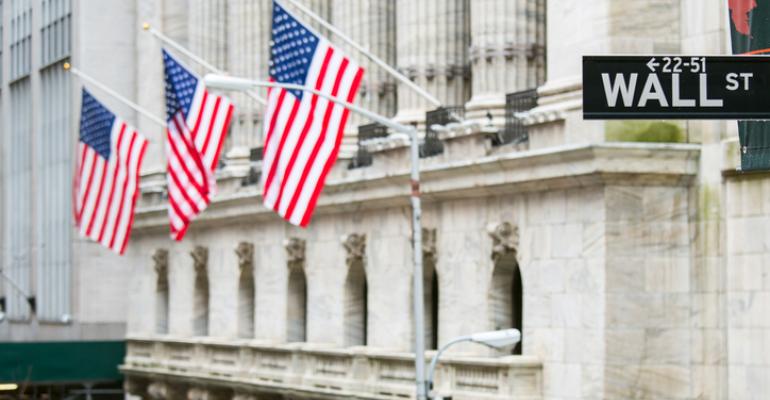(Bloomberg) -- People on Wall Street console themselves over the relentless march of passive by downplaying its scale. Sure, index funds have ballooned in size, but most estimates put passive ownership of the US stock market at around 15% -- not enough to get worked up about.
But what if it’s actually double that?
Struck by the massive amount of stock that changes hands every year when index funds reshuffle their holdings, Alex Chinco at the City University of New York and Marco Sammon at Harvard Business School decided to see if current estimates of passive ownership explained all the volume.
They found that accepted reckonings of passive’s size -- usually around 15% of the market -- came nowhere near the billions of dollars worth of stock that traded on those days. Instead, it looks more like 37.8%, or $16 trillion.
Their theory: conventional estimates are based on widely known mutual funds and exchange-traded products that track indexes. But they leave out a large stake controlled by big institutions like pensions and endowments buying index constituents according to their weights, no different from SPDR S&P 500 ETF and the like.
While their presence is well-known, by shedding a light on the potential size of these shadow passive portfolios, the paper adds yet another wrinkle in the longstanding debate over the rise in passive investing and its potential to distort price discovery and intensify volatility.
“It is shocking how much this goes on,” Chinco, an assistant professor of finance at Baruch College, said in an interview. “It’s an incredibly strict form of indexing.”
The academics analyzed the volume traded at the close on reconstitution days for S&P Global and FTSE Russell indexes and narrowed it to likely passive trading by focusing only on stocks added or deleted each year. The numbers were massive. For the S&P 500, the amount traded was six times what was needed by ETFs tracking it. For the Russell 1000 or 2000, it was four times.
The paper cautions their estimate is already as conservative as it gets, since it’s only estimating money tracking those index providers that also trade at the close on reconstitution days.
Read more: Brace for the Most Expensive, Manic Minutes of the Trading Year
One surprising implication of the results is that even some direct indexers, with their greater flexibility, are trading at the same time as everybody else and tracking the same benchmarks. That would seem to contradict one of the professed perks of their approach: avoiding the herd by rebalancing over time or even designing their own indexes.
Chinco says all those excess volumes are unlikely to come from active investors opportunistically waiting to execute at that time, since there’s no dip in trading in prior sessions.
Instead, this might all be because it’s easier for direct indexers to join in the wider reconstitution that dealers and index funds set up on the designated day, he says. The authors found that shares barely move the day they’re added compared to benchmarks, a sign there’s enough liquidity to accommodate the influx of purchases.
“You’ve got a ton of extra traders who don’t need to trade this way but were doing it anyway because of convenience,” said Chinco.





